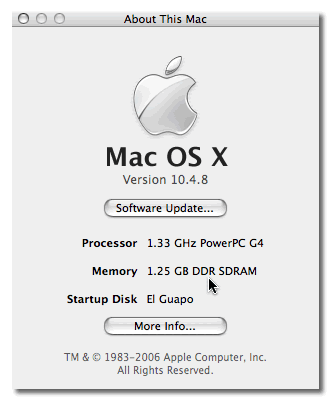
In true slacker fashion, I’ve held off announcing that I’m on vacation until its second-last weekday. I’ve been on holiday in the San Francisco Bay Area since Monday evening and won’t be back to work until Tuesday. Still, you can’t keep a nerd from checking his email and his blogs every now and again, even during some personal downtime.
Here’s something from Reddit that shoud make you snicker: it’s a thread from the comp.is.ms-windows.misc newsgroup from February 1997 in which the posters discuss whether or not computers will someday need gigabytes of RAM.
The most notable comments come from one Scott Nudds, who had a reputation for being one of the less-pleasant denizens of Usenet (quite a distinction, as he was up against a lot of pretty stiff competition). In the thread, he made several arguments to support his belief that most computers will never have more than hundreds of megabytes of RAM, ranging from the practical limits of exponential growth:
And how many more years before the count of bits is equivalent to the
number of silicon atoms in earths crust?
To the law of diminishing returns:
Storing a digital video library in RAM for instant access would require
tetrabytes of RAM. Just because you can invision some lame use for
gigabytes of RAM does not make it practical or even desirable to use
memory in such a way.
Past a few megabytes, the only thing more RAM gives you is faster random access to code and data than would otherwise be obtained with virtual memory.
As I said earlier, once you get past 50-100 megabytes of RAM, virtual memory makes more sense. I expect 200 megabytes will be the limit for most users. People who like to fake photographs will probably want several times this amount. The rest will be virtual.
Nudds had a rep for being a troll, loving argument for its own sake, but it actually does sound like he believed his assertions in this thread.
Ten years later, I’m the owner of two machines with over a gig of RAM. There’s “The Taint”, the Acer Ferrari laptop running Vista with just shy of 2 gigs of RAM, and my main axe, my trusty old 12″ G4 Powerbook with just slightly less…

Links



 Things are getting hot around
Things are getting hot around 
